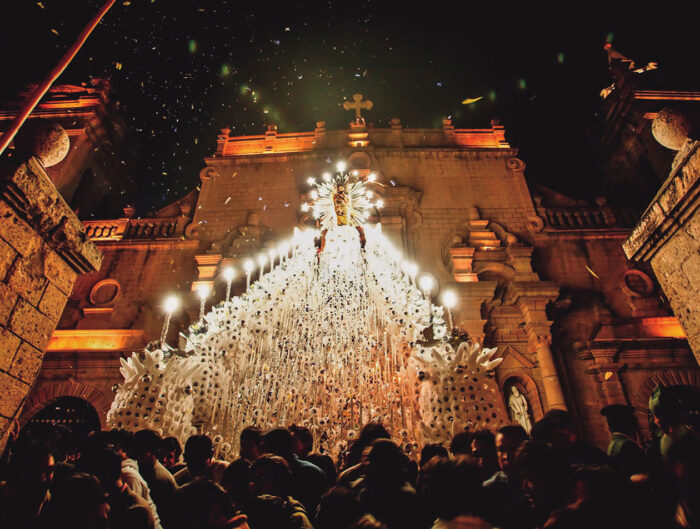Every year, Cusco adorns itself with a special mantle of spirituality and tradition during Santurantikuy, a festivity that goes beyond conventional Christmas celebrations. This unique event transports us to the deepest roots of Andean culture, blending the Christmas spirit with ancient Christian traditions that have endured in the region.

Introduction
The Santurantikuy Fair takes place every December 24th in the Plaza de Armas of Cusco and stands out as a manifestation of the cultural and religious richness that distinguishes the Imperial City. This annual event not only marks the beginning of Christmas festivities but also offers a captivating display of folk art, showcasing the Andean-Catholic syncretism.
History of Santurantikuy
Santurantikuy is a compound word in both Spanish and Quechua, meaning “Sale of Saints,” illustrating the fusion process between two cultures the Andean and the colonial European culture. However, it is important to note that it is a Spanish creation from the colonial period, intended to evangelize the indigenous people of Peru. Additionally, there is no exact start date for the celebration, but oral traditions suggest that the oldest Santurantikuy took place in 1834.
Nativity Scenes and Andean Religious Figures
In Santurantikuy, nativity scenes or “pesebres” take on special significance. Artisans present their creations, where traditional figures of the birth of Jesus blend with Andean elements. Mountainous landscapes, traditional costumes, and local cultural expressions are incorporated into these nativity scenes, creating a unique representation that reflects the fusion between Christianity and the rich Andean tradition.

Andean Rituals and Ceremonies:
Santurantikuy is not just a market but also a space for spirituality. Rituals and ceremonies honoring Pachamama, the mother earth, are conducted, seeking divine blessings for the religious figures acquired at the fair. The connection between the earthly and the spiritual is manifested through these practices, reminding us of the importance of harmony between humans and nature.
Manuelitos: Messengers of Tradition
The Manuelitos, children dressed in traditional costumes, are also prominent in Santurantikuy. These little ones play a vital role in the representations of the Christian nativity and carry with them the joy of Andean Christmas. Their presence reflects the transmission of traditions from generation to generation, serving as a living testimony to the cultural and religious fusion that defines the festival.
Reflections on the Cultural Manifestation of Santurantikuy
Santurantikuy is a unique celebration of Christmas in Cusco that takes on a dimension beyond conventional festivities. It is an event that embraces Andean traditions, merging them with Christian spirituality. The fair becomes a place where artistic creations, religious practices, and cultural expressions intertwine, creating a celebration celebrating Cusco’s heritage’s diversity and richness. In each craft figure and every ritual, Santurantikuy invites us to experience Christmas in a way that reflects the true essence of Cusco.














Leave A Reply